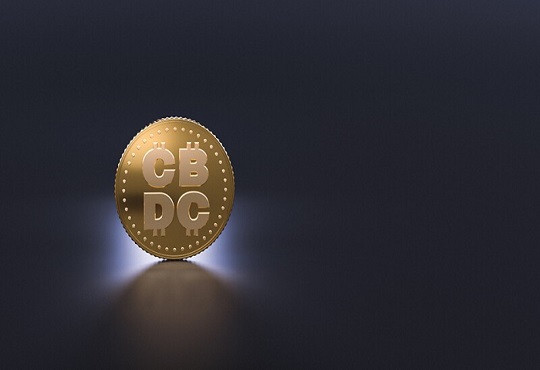Challenges in Implementing a central bank digital currency (CBDC)
Janifha Evangeline | Wednesday, 02 February 2022, 15:19 IST

While presenting Budget 2022, the Indian Finance Minister stated Digital Rupee, the name of the Central Bank Digital Currency in India, and this will be introduced using blockchain & other technologies. The RBI will issue these in 2022-2023, she added.
“Introduction of Central Bank Digital Currency (CBDC) will give a big boost to the digital economy. Digital currency will also lead to a more efficient and cheaper currency management system,” she said.
In order to counter the cryptocurrency craze, the central banks across the globe are taking a keener look at introducing central bank digital currencies. Central Bank Digital Currencies is the digital form of a country’s fiat currency. This will be issued by the federal bank of that particular country. Although it is in digital form, CBCD can be exchanged with the fiat currency of the country.
However, the introduction of CBCDs poses a few major challenges. The first challenge is the increased threats to the privacy of individuals. The second is choosing the privacy & security for enhancing technology that needs to be employed and the last challenge is the regulatory architecture which has to be set up to combat issues that include data breaches.
The challenge to tackle is the heightened risk to the users’ privacy, provided that the federal bank could end up handling a huge amount of data about the user transactions as it has serious implications provided that digital currencies will not render users the level of privacy as well as anonymity offered by transacting in cash.
Apart from that, the data stored with the federal bank in a centralized system will hold higher security risks, and therefore, robust data security systems will have to be set up in order to prevent data breaches. Hence, it is highly crucial to implement the right technology which will back the issue of CBCDs (central bank digital currencies).
The other challenge is the choice of technology implemented for central bank digital currencies is critical as it should not only be scalable, with almost zero latency, but also secure and, privacy-preserving.
The most logical candidate for central bank digital currencies should be a conventional multi-tier web architecture however this also possesses a potential downside.
The sizing for the infrastructure needed for central bank digital currencies will stay tricky if payment transactions are done using the same system and the Reserve Bank of India should map the technology landscape thoroughly, proceed cautiously with choosing the right technology for introducing central bank digital currencies.
CBCD in India to be introduced using blockchain & other technologies
“Digital rupee announcement is more formal. (However) RBI has not prepared its model or tested it. (The) government has also not indicated when it will bring out (an) enabling law for it,” said former finance secretary, S.C. Garg.
While the RBI has begun to work on Central Bank Digital Currency and other fintech-related activities, it has recently set up a new fintech department which will be the central point of contact in the Reserve Bank of India for all fintech-related activities.
“I believe the budget 2022 is a fantastic take and the government has made it simple and effective. They have directly targeted the apex areas, keeping health and infrastructure in focus considering the effects of the pandemic. With rapid digitalization, the taxation of cryptocurrency is another landmark achievement in this year’s budget, as previously digital currency has always been in the grey area. Digital Rupee using Blockchain would also be an interesting change in the way transactions would take place going forward,” says Mr. Ritesh Khandelwal, Chief Finance Officer, NxtGen Datacenter and Cloud Technologies.
According to Aniket Jindal, Co-founder, Biconomy, “The blockchain-based digital rupee is a welcome step. While the critics rightly point out that it's not decentralized & issued by the govt, we need to understand that the mainstream adoption of web3 & crypto won't happen overnight. It will happen slowly with small steps toward our eventual goals. And such a blockchain-based digital rupee has the potential for being a big step in onboarding 100s of millions of Indians into the blockchain economy. It will also help open one of the largest economies to innovations in the web3 ecosystem.”
Conclusion
There are numerous benefits of digital currency and numerous people can be included in the formalized economy and thereby obtain access to credit facilities. Also, according to an economic research report by the SBI, with the introduction of Goods and Services Tax, the country’s informal economy has reduced to around twenty percent of the formal economy from fifty-two percent earlier. Furthermore, numerous industry stakeholders anticipate Central Bank Digital Currencies to shrink this number as most of the people carry out transactions through digital currencies. While money laundering and the use of black money can be decreased further, defaults in payments can be curtailed.




